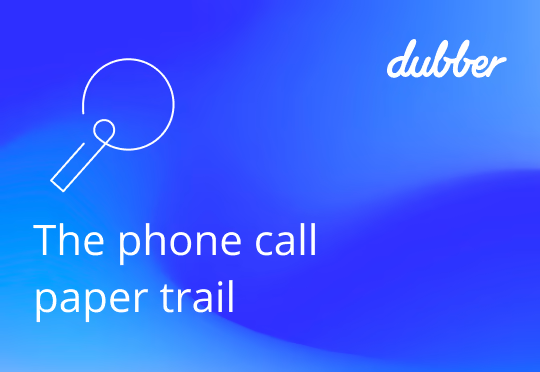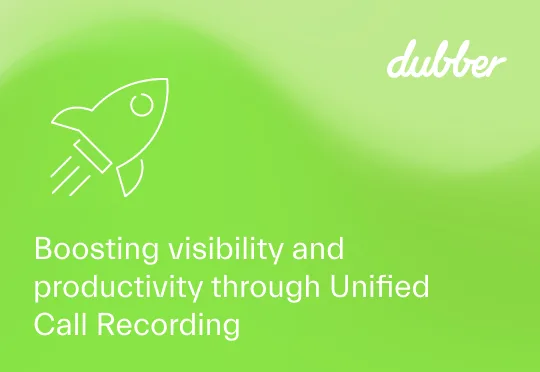
The most important conversations happen over the phone: the deal you want to close, the urgent task that requires attention, and the complaint you want resolved. Unfortunately, unlike emails, there isn’t a paper trail that shows exactly what was said. Until now.
Get concrete evidence of what was said
Companies who do the majority of their business over the phone (did you know that 60% of customers prefer to call small businesses on the phone?) may struggle to find accurate proof of what was said between them and their customers. By relying on note-taking during a call, human error is inevitable. Without concrete evidence of the conversation, orders can be incorrectly fulfilled and customers can misremember what was discussed over the phone.
The solution to these challenges is a secure and scalable call recording solution that supports a businesses communications system – whether that’s fixed lines, hosted IP telephony, mobile devices, or solutions such as Microsoft Teams. With accurate proof of what was said, businesses can ensure better quality control in their order fulfillment and be better placed to resolve disputes. With AI transcription, it becomes even easier to find evidence of a conversation.
The ability to replay calls or refer to transcripts is only useful when they can be instantly retrieved. Keeping a customer waiting while you perform slow and painful SQL search just isn’t going to cut it in a world where everyone expects instant results. Businesses need to make sure they have real-time access to recordings for quick and efficient customer service.
Learn from unhappy customers
Recorded calls are also invaluable for staff training. Having real-life examples of what kind of calls to expect on the job prepares new employees for life in their role. Recorded calls can also be a great tool for the constant improvement of existing staff – especially with AI-powered sentiment analysis. Calls rated with positive sentiment can demonstrate best practice and can also highlight which employees should be rewarded for their excellent service, while those with negative sentiment can provide examples of unhappy customers and used to work out how to improve in the future.
Not only can recorded calls and their transcripts be useful for staff to refer to, they can also be a really useful tool for accurately sharing information. The ability to pass along a recording to a colleague in order to fulfil an order or solve a problem is invaluable, and recordings and transcripts can also be shared with customers for their information and reassurance.
But what about data protection?
Calls shouldn’t be made available to just anyone, and there must be security measures in place to ensure that files cannot be downloaded and shared with anyone outside the relevant parties. The most secure method of sharing recordings is with expiring links that can only be accessed by the intended recipient. These should prevent playback after a set time period, or a certain number of replays. Call recording solutions should always have access permissions to ensure that calls can only be played by appropriate employees, or supervisors only.
Case study: Dose Moving and Storage
Dose Moving and Storage is a family owned business that provides moving and storage solutions. We spoke to founder Marilee Dose about the company’s experience using Dubber.
Dubber: What was the challenge that brought you to choosing Dubber?
Marilee Dose: We wanted a record of all of our conversations with customers for improved dispute resolution, quality control, and training.
D: How did Dubber help you solve this problem?
MD: Recording our calls not only gives us concrete proof of what was said to customers, we can also securely share recordings with them so they can refresh their memory. This has been invaluable when disputes with customers arise. The ability to replay conversations has been instrumental in improving quality control within the business and we have also used recorded calls to enhance our staff training.
D: What was the process of going live with Dubber like?
MD: Dubber is very user friendly and reliable. We found the portal easy to use and we had the peace of mind that every call was automatically recorded and could be retrieved instantly.
If you’d like to learn more about how businesses are improving dispute resolution with Dubber, speak to a member of the team today.


